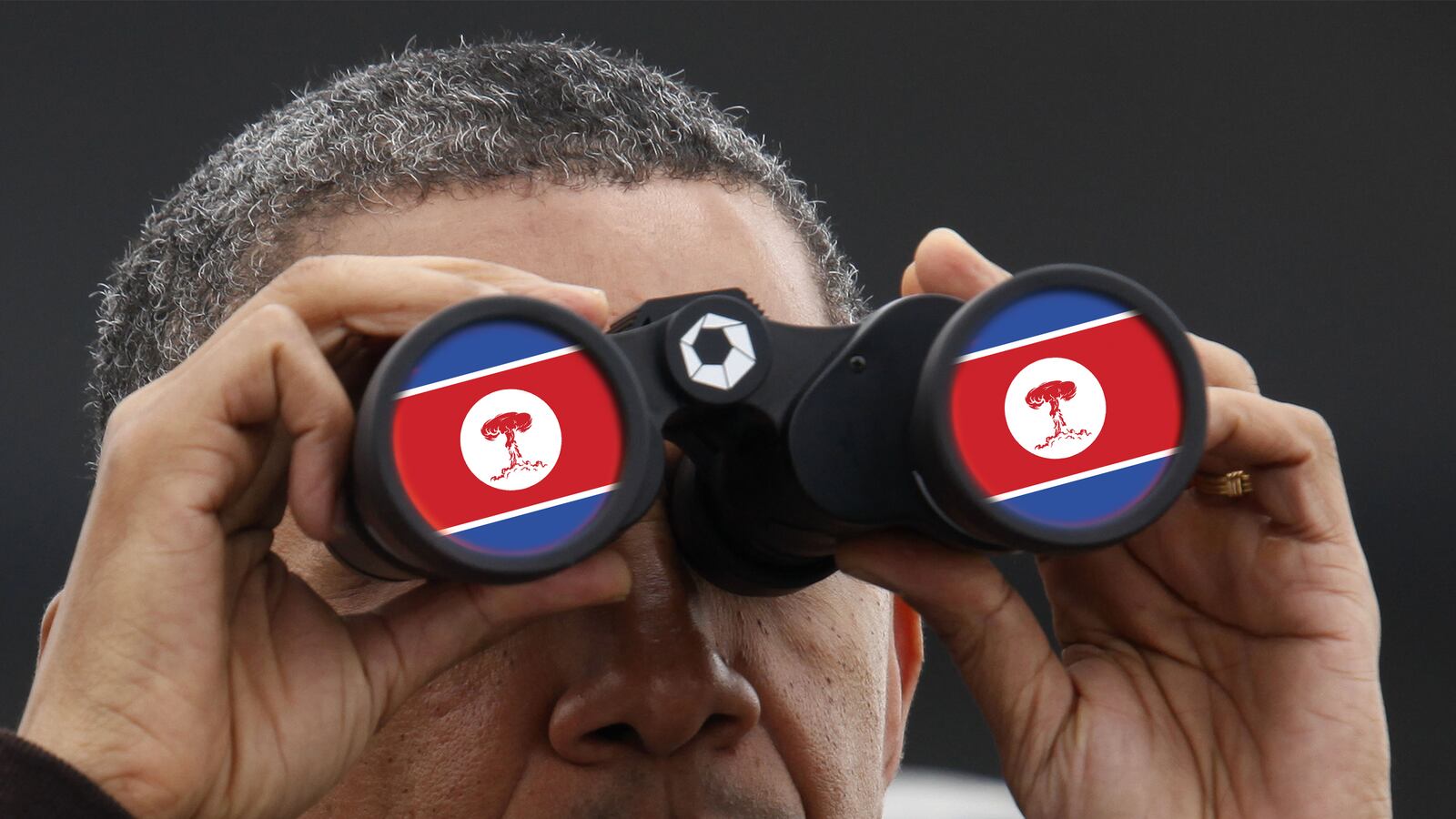North Korea today claimed it has joined the world’s first rank of nuclear nations by successfully conducting a hydrogen bomb test at 10 a.m. Pyongyang time.
If the claim is true, the Kim Jong Un regime has made far more progress in developing nuclear weapons than believed. Even if the boast is false, the detonation is a dangerous signal.
The test, which triggered international earthquake detection systems, will plunge the region into a diplomatic crisis and intensifies concerns about nuclear proliferation to Iran.
In December, North Korea made a claim that it possessed a hydrogen weapon, which releases energy from the fusion of atomic particles. The fusion reaction of an H-bomb is first triggered by a fission explosion.
The North is known to have detonated three crude fission devices, which derive their power from the splitting of particles, in 2006, 2009, and 2013.
At the moment, little is known for sure. The U.S. Geological Survey today detected a 5.1-magnitude tremor in northeast North Korea, close to Punggye-ri, the spot of the three prior detonations. The South Korean and Chinese seismological services also measured the event. It is almost certain, therefore, that North Korea detonated a nuclear device of some kind.
But was it an H-bomb, which is substantially more powerful than fission devices and much harder to build? It is more likely, as Joe Cirincione, president of the Plowshares Fund, tweeted, that North Korea set off a so-called boosted fission weapon, a device whose yield is enhanced with tritium.
It may take weeks for the international community to learn the truth of North Korea’s H-bomb claim, and it’s possible we may not know for years. The United States to this day, for instance, has not learned whether the device the North detonated in 2013 had a plutonium or uranium core.
South Korea reports that the detonation today took place near the earth’s surface. It is much more likely the device was, as measured by the U.S., 10 kilometers underground. The farther below the surface, the less likely the United States or any other country will be able to “sniff” the particles released by the detonation and thereby learn about the nature of the device.
Analysis of the explosion by David Albright, founder of the Institute for Science and International Security, concluded that a two-stage fission-fusion weapon capable of obtaining explosive yields of hundreds or thousands of kilotons had probably not been tested by the North Koreans. “It is likely that this was not a test of what in the popular literature is interpreted as an H-bomb,” he said.He said it remained possible that Pyongyang had developed a one-stage thermonuclear device capable of inflicting far more damage than an A-bomb, or they could simply “be bluffing” and attempting to pass off another A-bomb test as a breakthrough.
In any event, a simple fission detonation is also bad news, especially if North Korea used the opportunity to develop a miniaturized warhead. In April, the North American Aerospace Defense Command (NORAD) chief Admiral William Gortney said North Korea could target America’s West Coast with its mobile KN-08 missile, which can carry a nuclear warhead. The KN-08 is a special threat because it can hide and shoot, which means it is hard to destroy on the ground. The KN-08 is a relatively small missile, which means the North needs to develop a light-weight warhead.
It appears a missile launch is coming soon. As Bruce Bechtol Jr., author of North Korea and Regional Security in the Kim Jong-un Era, has pointed out, North Korean nuke and missile tests come in pairs. “We have seen nuclear tests conducted within a very short time frame—either before or after—long-range ballistic missile tests,” he told The Daily Beast after today’s detonation.
Another reason today’s test would be ominous is Iran may have witnessed it and helped the North Koreans. During all three previous North Korean detonations, Iranians, including the shadowy Mohsen Fakhrizadeh, the chief of Tehran’s nuclear program, were present.
The presence of personnel from Iran at the site would have serious implications for the just concluded nuclear agreement with Tehran. The assumption of the P5+1, the five permanent members of the Security Council and Germany, was that the inspectors of the International Atomic Energy Agency would be able to inspect Iranian facilities to ensure that Iran did not have a nuclear weapon. If Iran’s nuclear weapons program is located in North Korea, however, Tehran can build and store weapons thousands of miles beyond the sites monitored by international inspectors.
And there is one other reason the test is of special concern. As Bechtol notes, North Korea’s decision to go ahead with its detonation today indicates that the Kim Jong Un regime does not place much importance on its relations with the U.S. or its neighbors like China and South Korea. For instance, the detonation completely undermines the basis of South Korean President Park Geun-hye’s signature “trustpolitik” policy of engagement with the North.
Similarly, the test shows that Beijing is no longer able to influence Kim. China has for years expressed its displeasure with the North continuing its nuclear weapons program. In fact, there are rumors that Kim Jong Un canceled the high-profile performances in Beijing by his Moranbong Band last month because, while the group was there, China expressed irritation with his bragging of possessing an H-bomb. Kim has deliberately cut ties with his regime’s only formal military ally and sponsor since the end of 2013.
North Korea, once again, has decided to go on its own, and that is true whether the detonation today was of a crude device or, as claimed, a sophisticated one. Kim’s militant regime, the international community saw today, is making steady progress in developing the world’s most destructive weapons.






